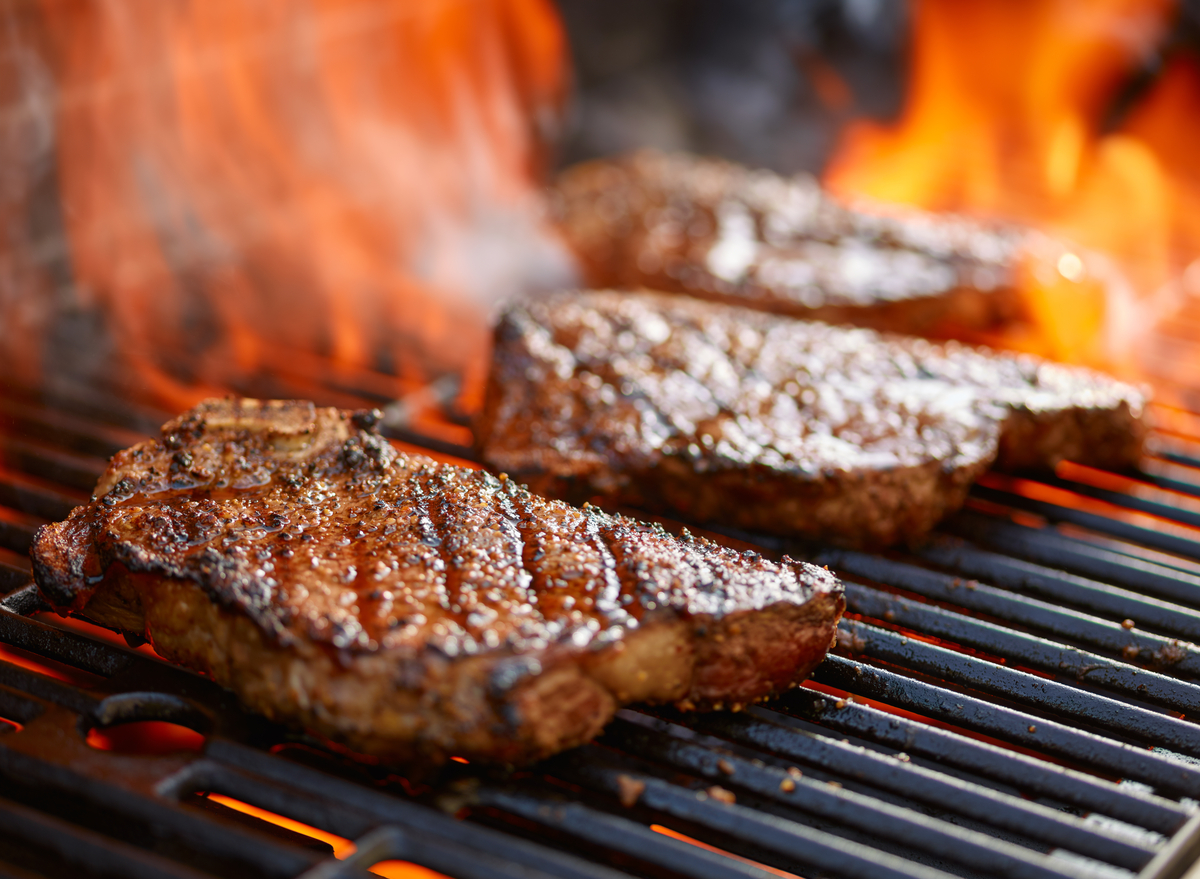
Cooking at home isn't nearly as big of a trend nowadays as it was during the height of the Covid-19 pandemic. In fact, Americans' total spending on dining out—or, "food away from home," as the USDA calls it—returned to normal levels by April 2021 and has continued to rebound in a major way ever since. This comes even as the cost of food away from home soars higher and higher every year–up 4.5% in 2021, another 7.7% 2022, and proceeding to rise in 2023.
But, that's not to say there aren't plenty of people out there still whipping up fresh bread or trying their hand at homemade pasta. And, these at-home chefs just may be ready to up the ante and graduate to a more highbrow category of food, such as steaks.
In order to take that leap, consulting with a professional is always encouraged. Trained chefs can help point you to the steaks that can deliver an easy win. And, more importantly, indicate which cuts may be all sizzle and no steak to a newbie cook.
"Ultimately, the best steak for home cooking depends on your personal taste preferences and cooking skills," says chef Peter Sidwell, in-house expert at the U.K.-based kitchen retailer CookServeEnjoy. "When selecting a steak, consider factors like marbling (fat content), thickness, and your preferred cooking method. No matter which steak you choose, proper seasoning, and cooking technique will help."
With that being said, there are a number of specific cuts that Sidwell and other culinary artists warn less experienced at-home chefs to avoid, altogether. Read on to find out which steaks are likely to be the toughest to tackle in the kitchen.
Round Steaks
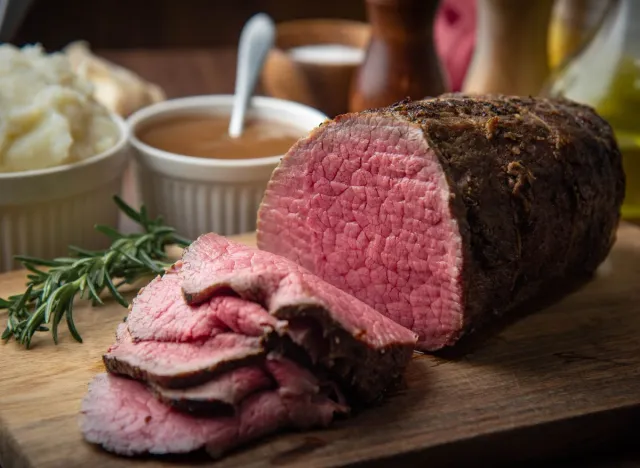
"Round steaks (eye of the round, top round, bottom round) typically have the least amount of fat marbling, which can make them less tasty and more difficult to cook when compared to fattier cuts," explains Walter Nunez, executive chef at The Rex Steakhouse in Redondo Beach, Calif. These slices come straight from the rear and hind leg of the cow, an area which experiences a lot of movement and is therefore a tighter muscle, making for tougher beef.
"Cooking these at home takes a lot of patience and time since they're best cooked low and slow–ruling out cooking methods like grilling, reverse-searing, or cooking them on the stove top," Nunez says. Unless you're looking for a jaw workout, you are better off using these cuts for braising, stewing, or even slow cooking, according to the chef.
Specifically for eye-round steaks, chef Taylor Kearney suggests thinner cuts or a sous-vide method to combat the toughness. If you try to cook it as you would with a normal steak, "it will never come out like you think," says Kearney, vice president of culinary at Harwood Hospitality in Dallas, Texas, where he spearheads the beef program and oversees over 11 restaurants and bars, including Stillwell's Steakhouse & Bar.
Tri-Tip Steak
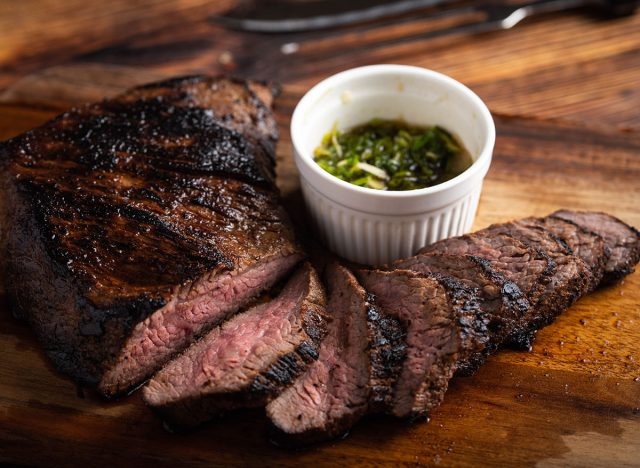
You may recognize this steak by its bulky, triangular shape, hence the name tri-tip. And, you may have been tempted to pick it up at the grocery store because of its reasonable price tag. But, chef Kearney warns to proceed with caution. While this steak does offer nice marbling, yielding great results hinges heavily on how you prepare and clean your cut. Similar to round or chuck cuts, tri-tip can contain a wealth of connective tissue–silvery lines of muscle fibers, which run through the meat and "eat like shoe leather," if not removed or handled properly, according to the chef.
Bone-In Ribeye & Other Bone-In Cuts
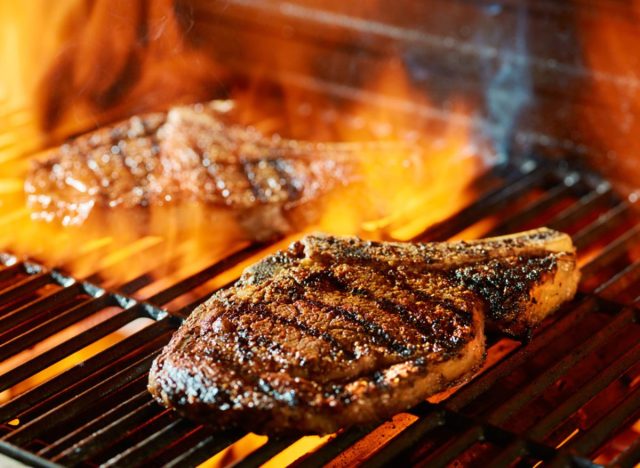
If you ask Omaha Steaks Executive Chef David Rose, he'll tell you that larger steaks such as bone-in ribeyes are kryptonite to amateur cooks. "Thicker, bigger cuts of steak (or "king cuts," as we like to call them at Omaha Steaks) can be a bit trickier to cook at home due to their sheer size," explains Rose, also a former finalist on the reality TV series Food Network Star. He says the main issue with these colossal cuts is that they're very easy and common to burn the outside of the steak before the inside reaches the desired doneness.
The actual bone within a bone-in cut isn't doing you any favors, either. While the bone is thought to enhance the meat's overall flavor, it also acts as an insulator, causing uneven cooking. The meat closest to the bone will cook more slowly than the rest.
Chef Nunez adds that you should avoid cooking any kind of bone-in steak in a pan, because "it's difficult to get a good sear with the bone in the way," he says.
Skirt, Flank, & Hanger Steak
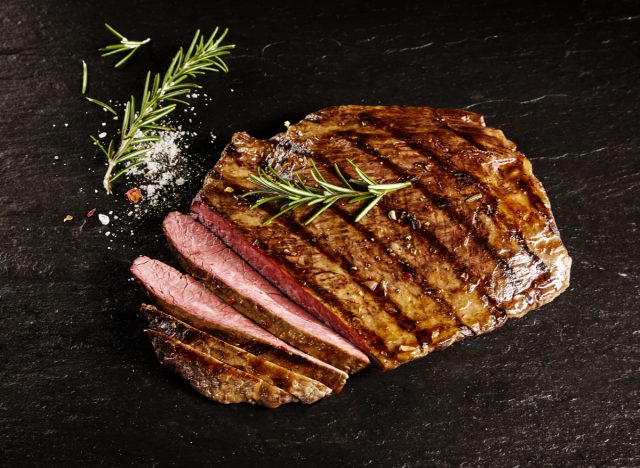
Now, this one is a bit controversial. Some chefs love these thin-cut steaks because they're inexpensive, rich in flavor, and cook up in a flash on a grill or cast iron skillet. Others say that trying to cook them just right–somewhere between over and underdone–is much like trying to balance on a tightrope.
"Both flank and skirt steaks, while flavorful, are also cuts of beef that are known to be tougher in texture, making them potentially difficult to cook at home–unless you have a grill that can get really hot or you're willing to trip the smoke alarm," says Nunez. "With these cuts, you have to be very careful to not overcook them. In fact, anything beyond medium rare is considered overdone for these cuts–otherwise, you'll end up with a very tough piece of meat."
Hanger steak, in particular, can turn out nicely using "slow cooking methods like braising or stewing," according to Sidwell. But, if you don't have the time or patience for these more leisurely cooking methods, it might be best to avoid the tough steak, altogether. Although hanger steak is delicious, flavorsome, and his own personal favorite, Sidwell notes that "it can be tricky to cook evenly due to its irregular shape," and is "best suited for experienced cooks who are comfortable with uneven cooking."
Strip Steak
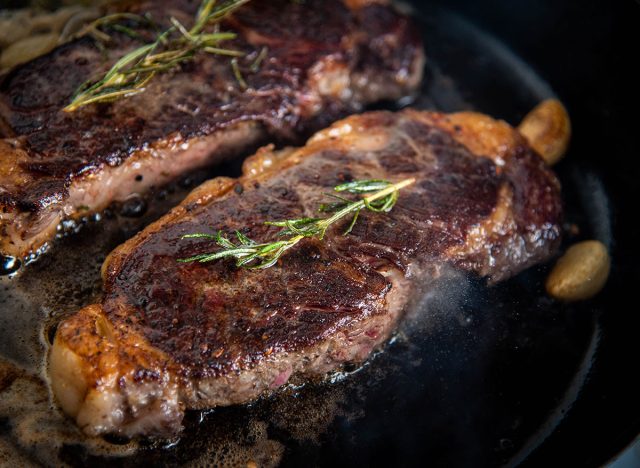
The strip steak operates under several different aliases including ambassador steak, Kansas City strip, Omaha strip, and, most famously, the New York strip. It is sliced from the short loin of the cow and cooks up nicely, given its firm and tender physique and lack of bone (the majority of the time it is served boneless).
So, what's the problem then? Chef Nunez's hesitation stems from the price of this esteemed cut. All of these admirable qualities makes the New York strip one of the most expensive steaks on the market—and, one you don't want to risk ruining and wasting as a novice chef.
"We serve New York and Kansas City strip steaks at The Rex and they're a specialty of ours, but these aren't necessarily cuts I would encourage people to make at home unless you're confident in your cooking skills," says Nunez. "I would save these cuts for a steakhouse experience—there's nothing worse than overcooking or burning an expensive cut of meat and not being able to enjoy it."
If you have the gall and you want to give it a go, the chef recommends applying a reverse searing method with the New York strip–a technique he calls "very forgiving."





